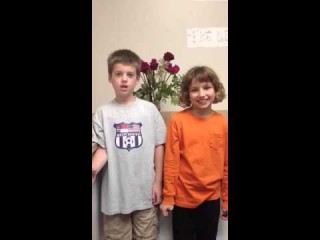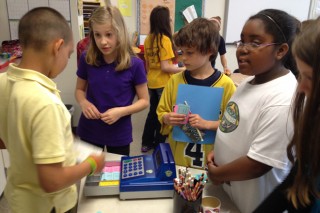Thomas Edison invented the light bulb; Marie Curie helped pave the way for the development of X-rays; and László Bíró created the ballpoint pen. Over the years, researchers have collaborated to not only improve these inventions, but also sustain an environment that fosters creative thinking. These individuals not only changed our world, but also greatly influenced generations of inventors, including the Episcopal School of Dallas’ first Invention Convention.
Fourth graders spent the month of November studying some of the world’s most influential inventors. Then, they collaborated with peers to create their own inventions. Classes as a whole brainstormed different problems that needed solving, and worked together to develop potential solutions to fill the voids. Students also pondered how inventions could emerge from combining two existing items.
“Invention Convention encourages our students to dream about ways to improve our world, and then formulate a solution to these problems,” Sandy Kerr, Head of Lower School, said. “The project gave our students the perfect opportunity to celebrate the design and entrepreneurial spirit that is alive in our classrooms.”
Brenda Wilder, one of ESD’s fourth grade teachers explained that after students had the initial idea for their invention, they had to fill out a “Student Patent Application” that included a sketch and explanation of how their creation works. If their product was approved, they were administered a patent number and could proceed with creating a tri-fold board displaying their complete business plan, including product and consumer information.
“Students were expected to come up with a creative name for their invention, a name for their company, the price, and where it could be purchased,” Wilder said. “Some students even created slogans and jingles for their item.”



